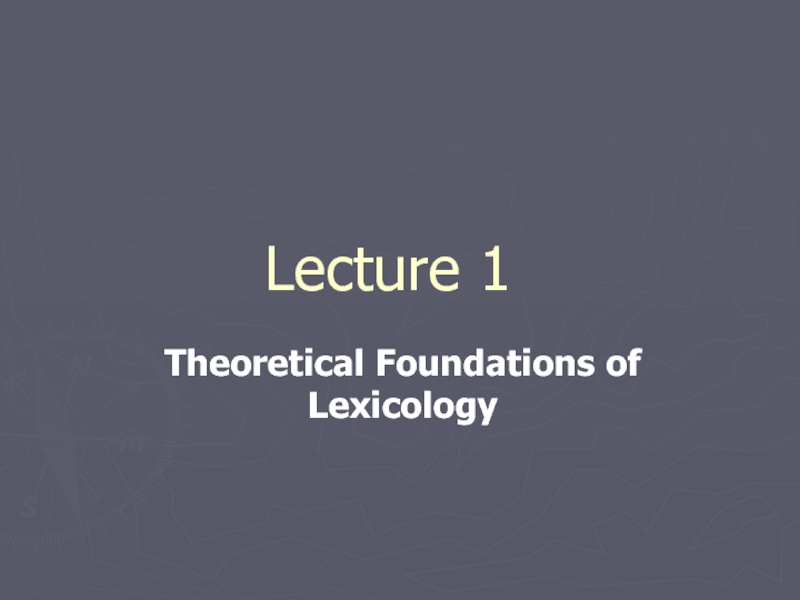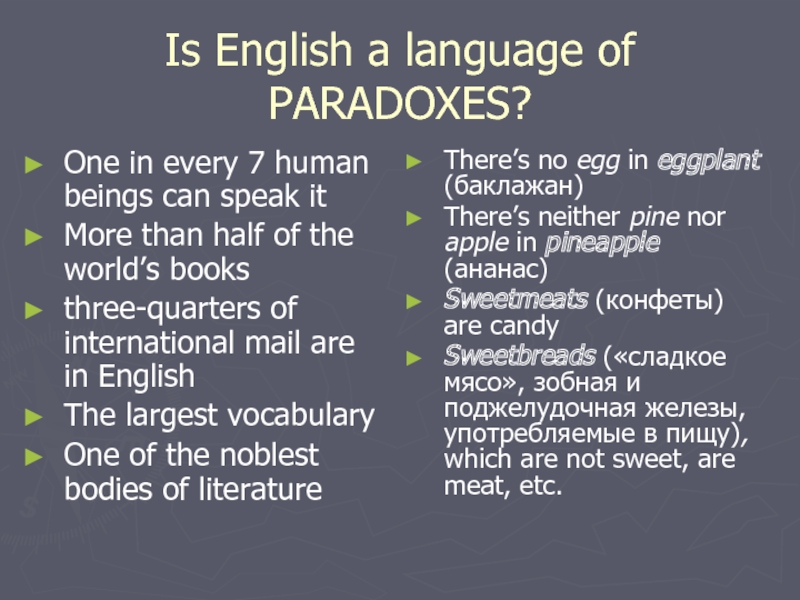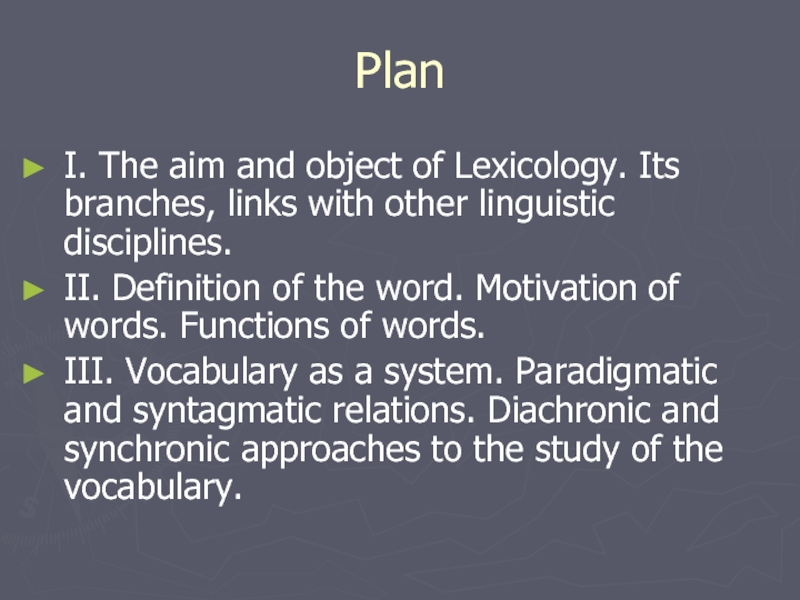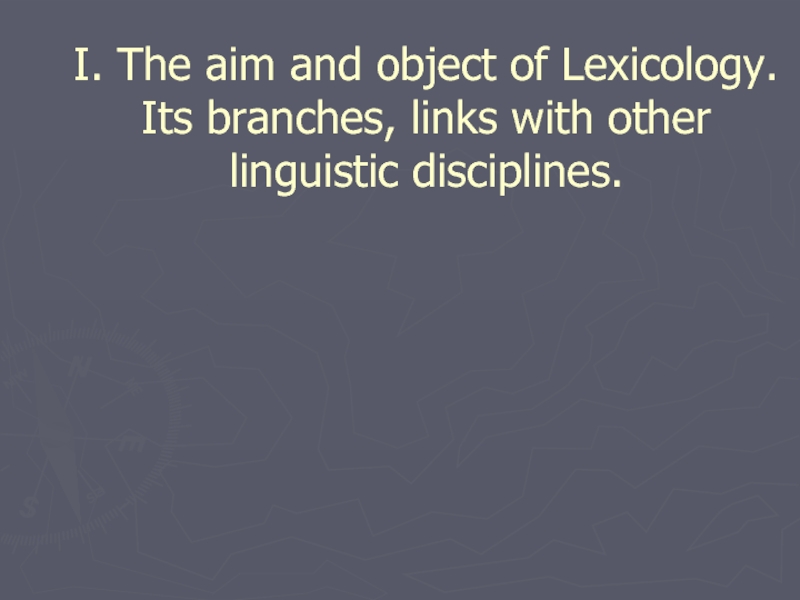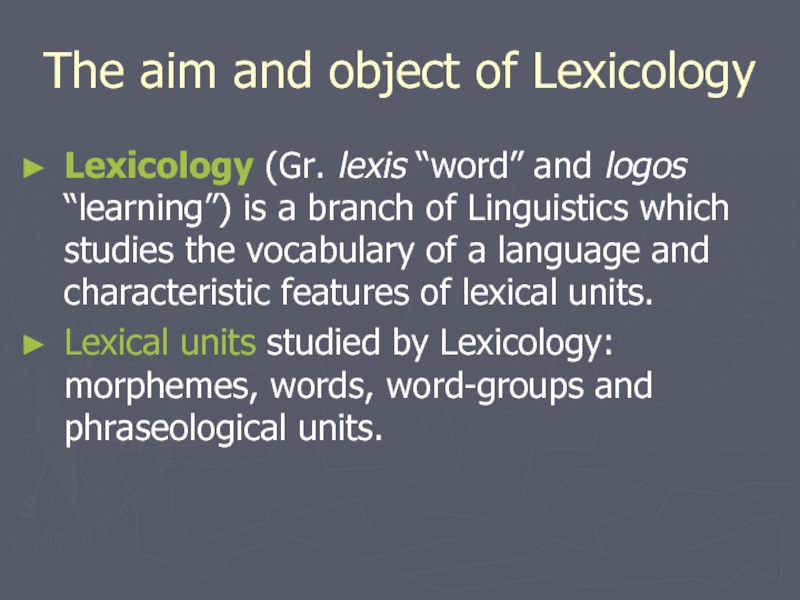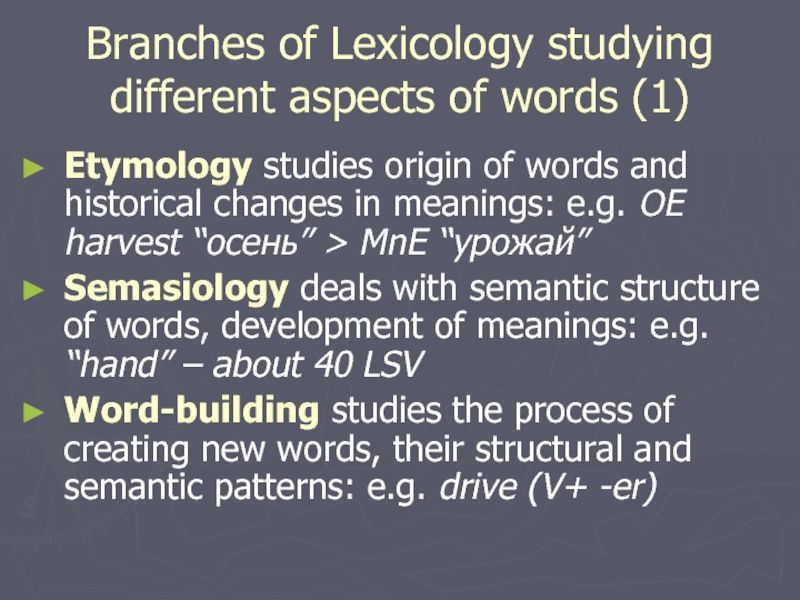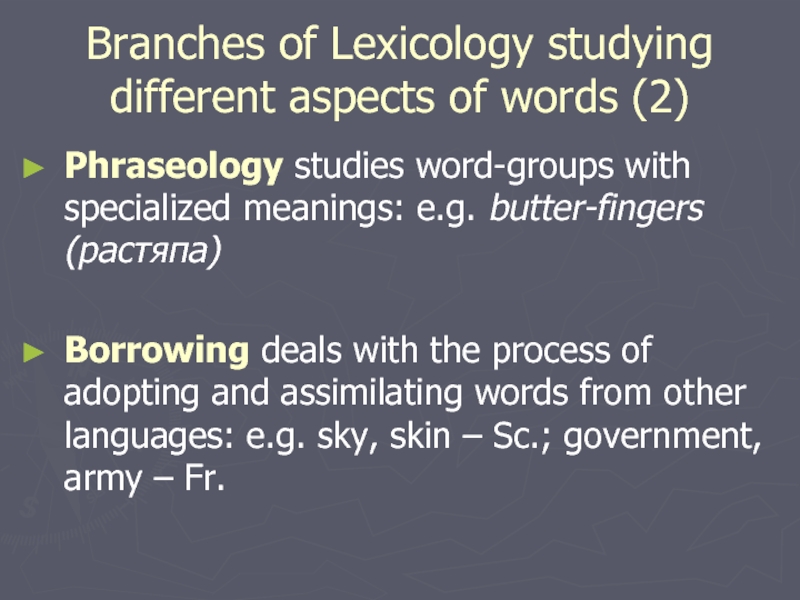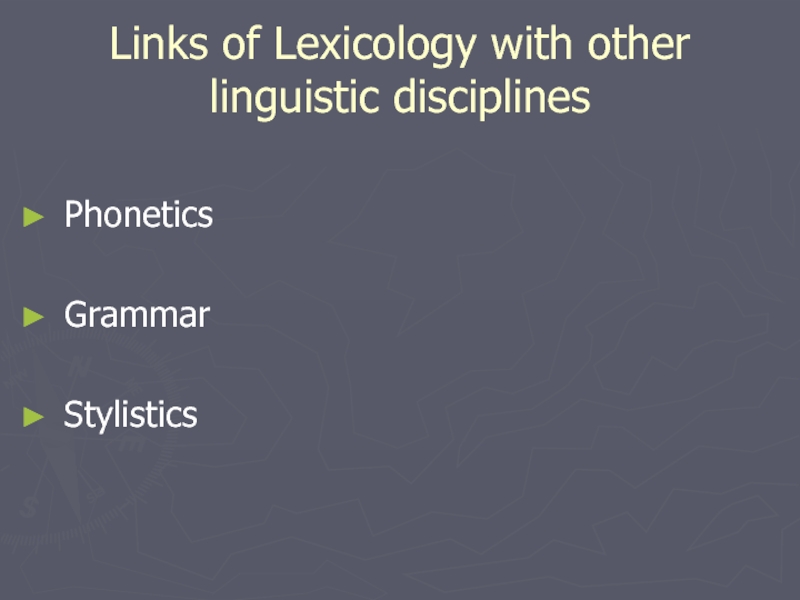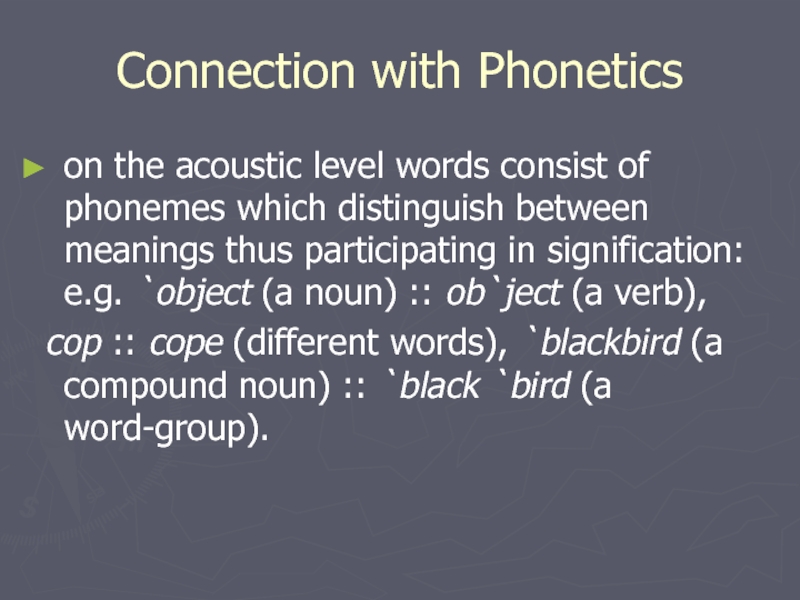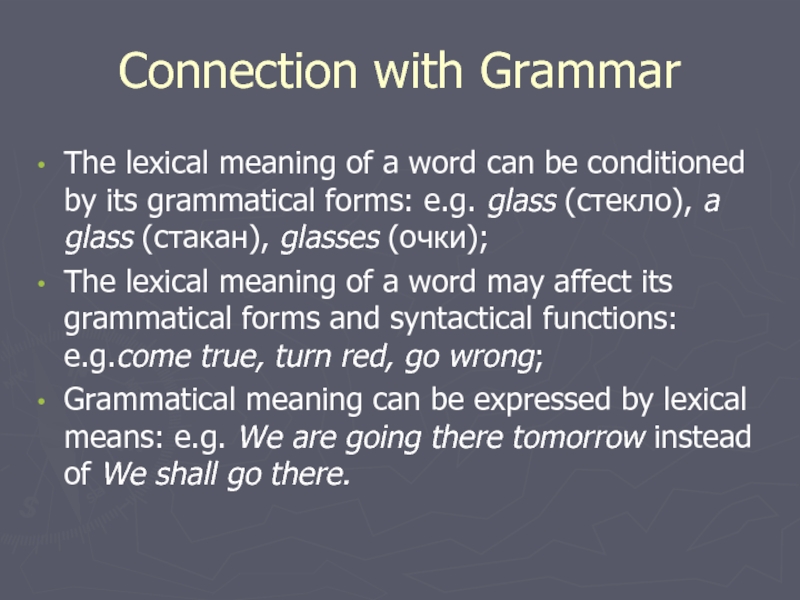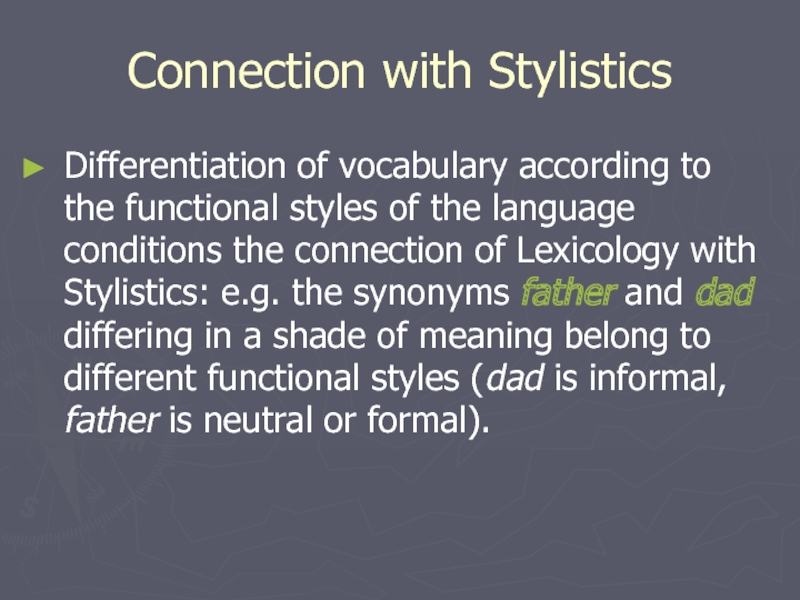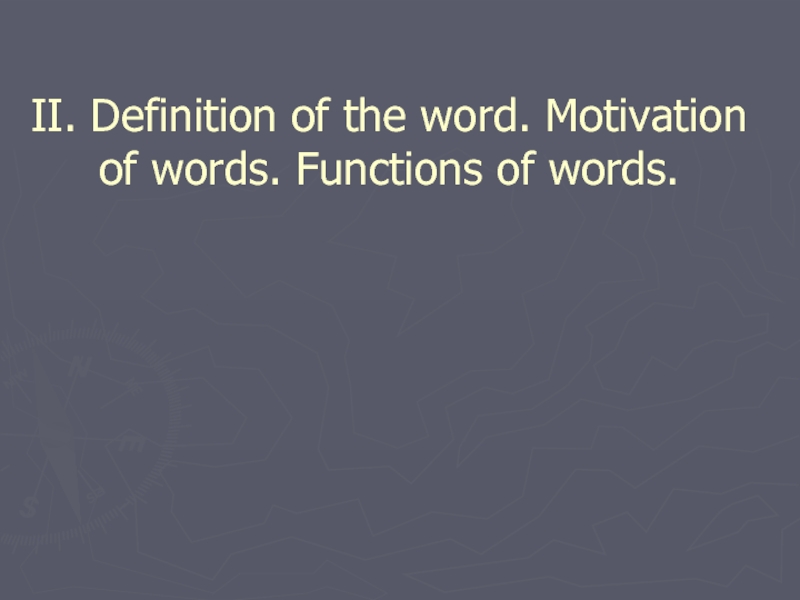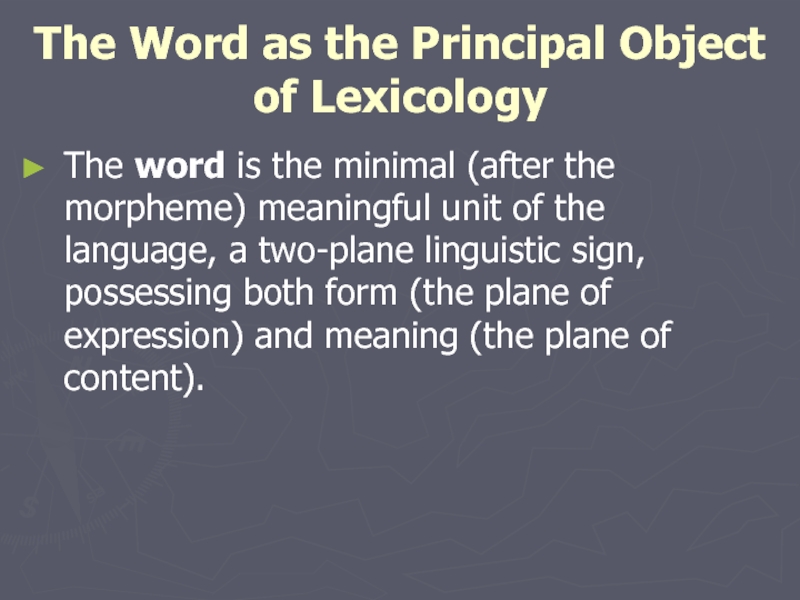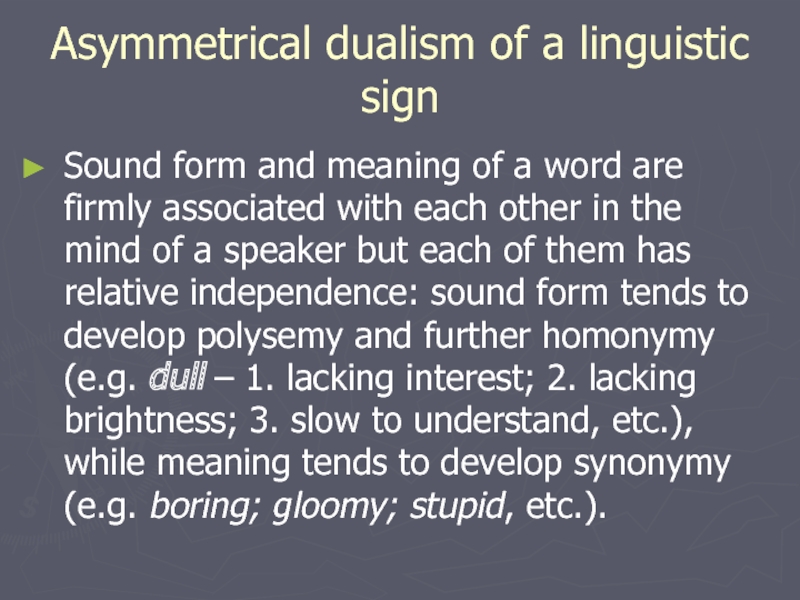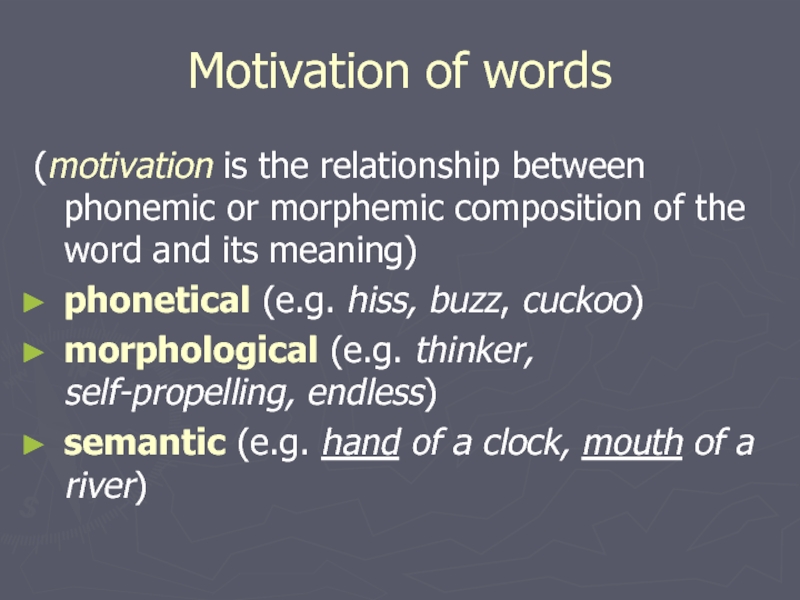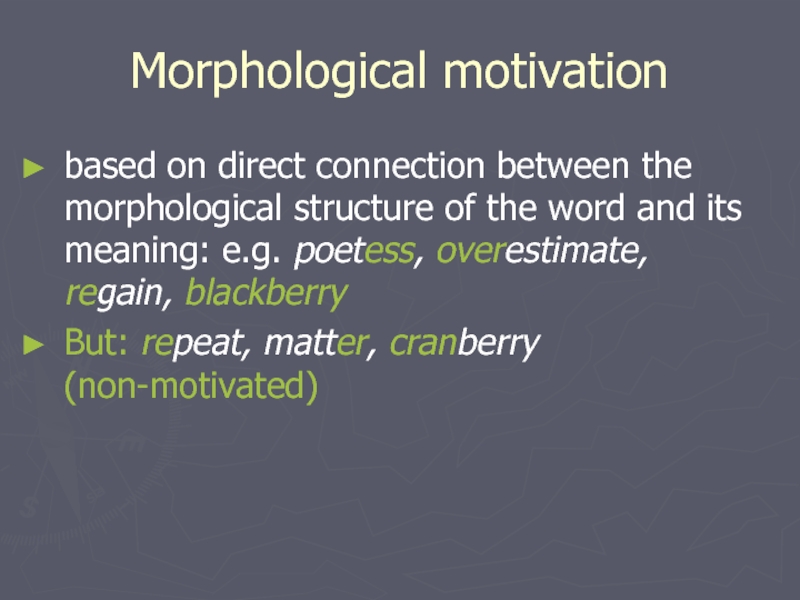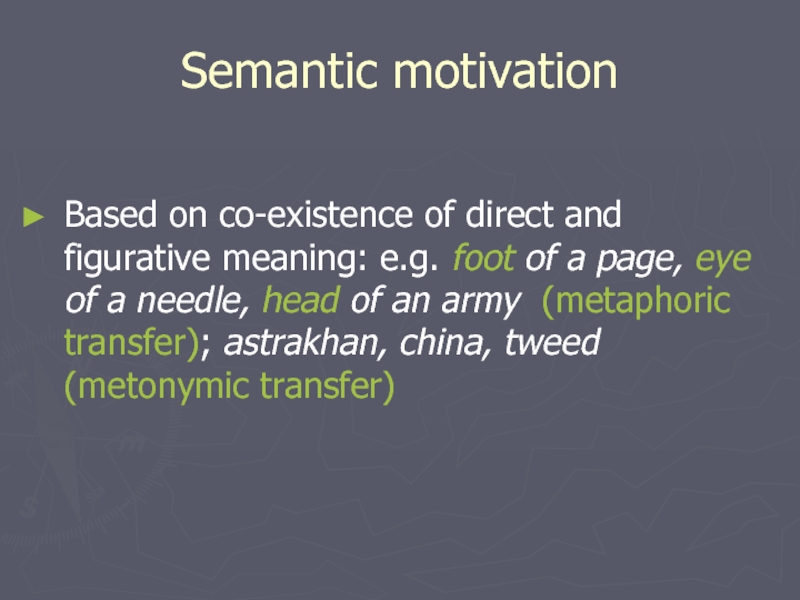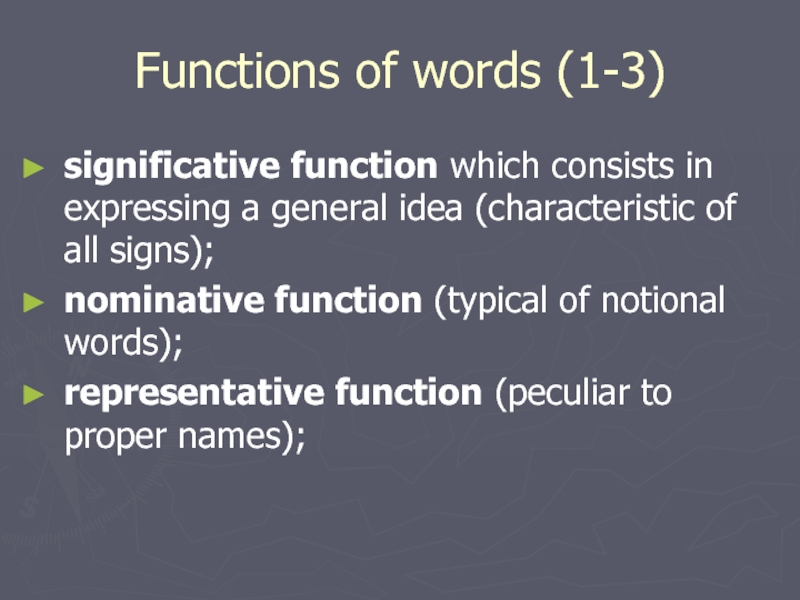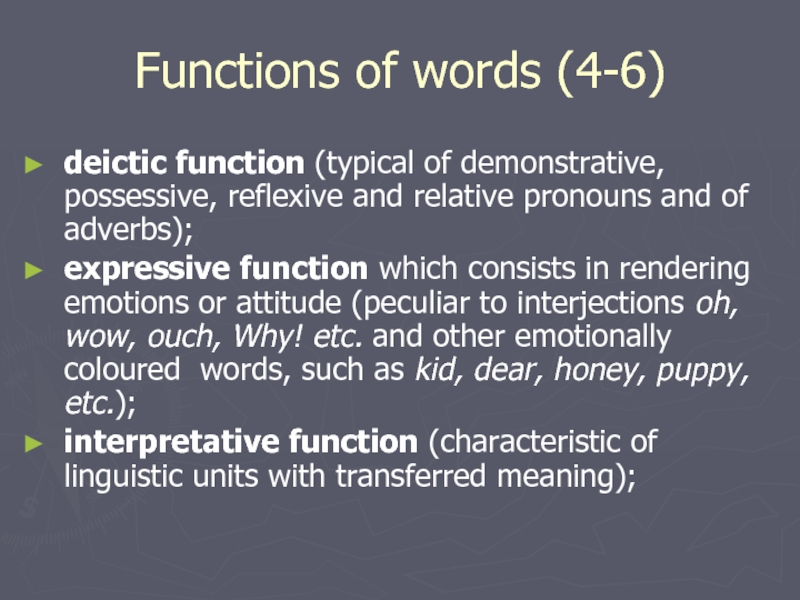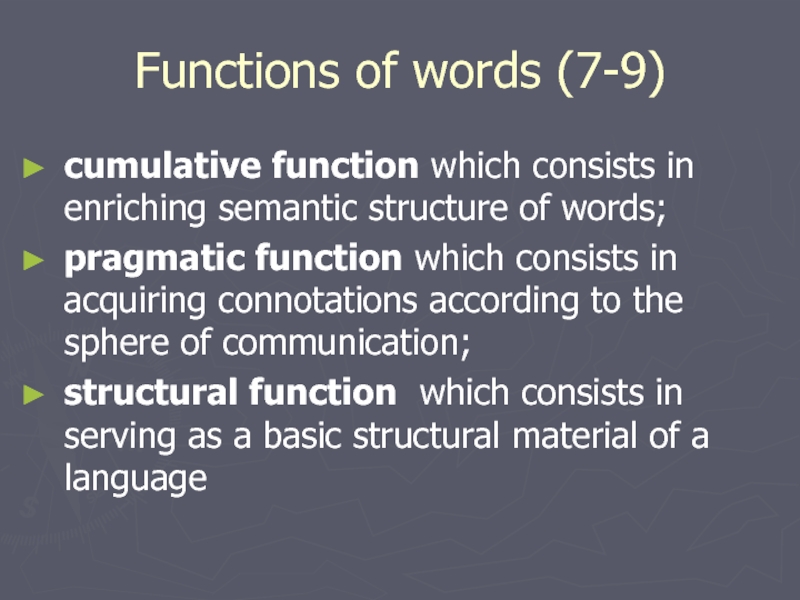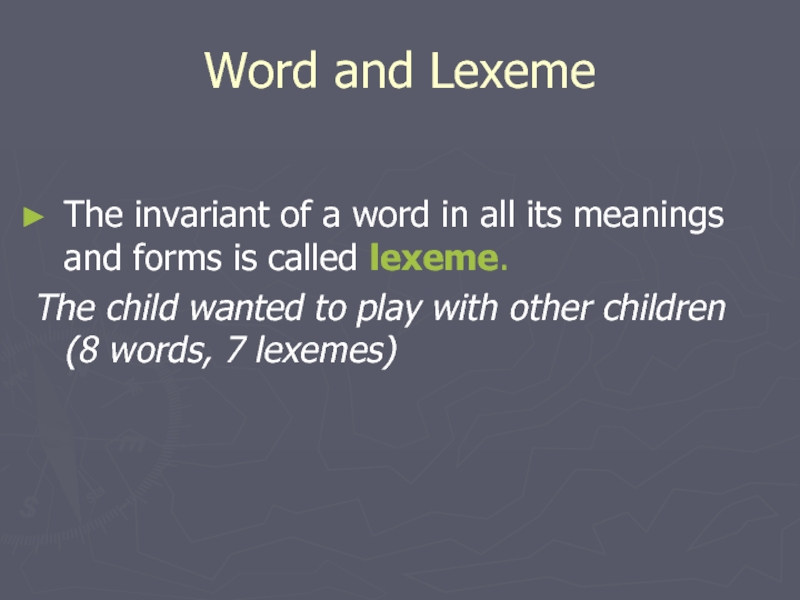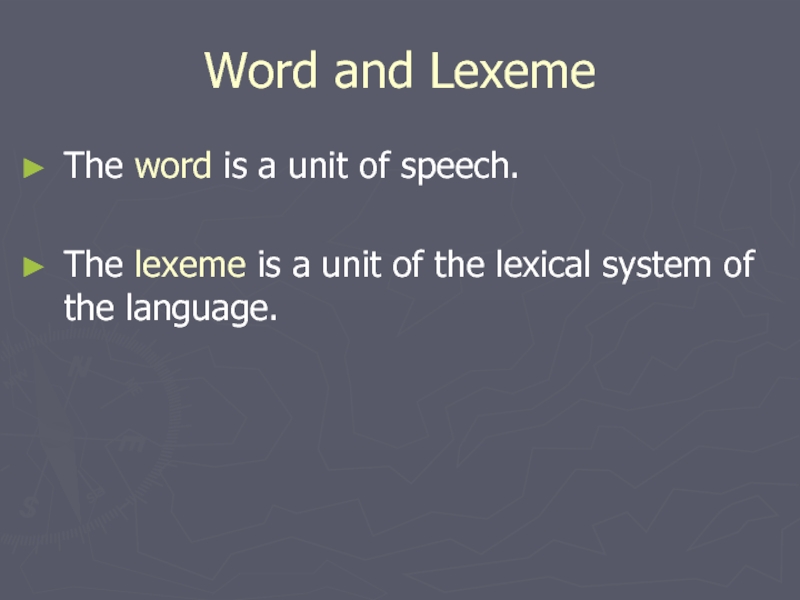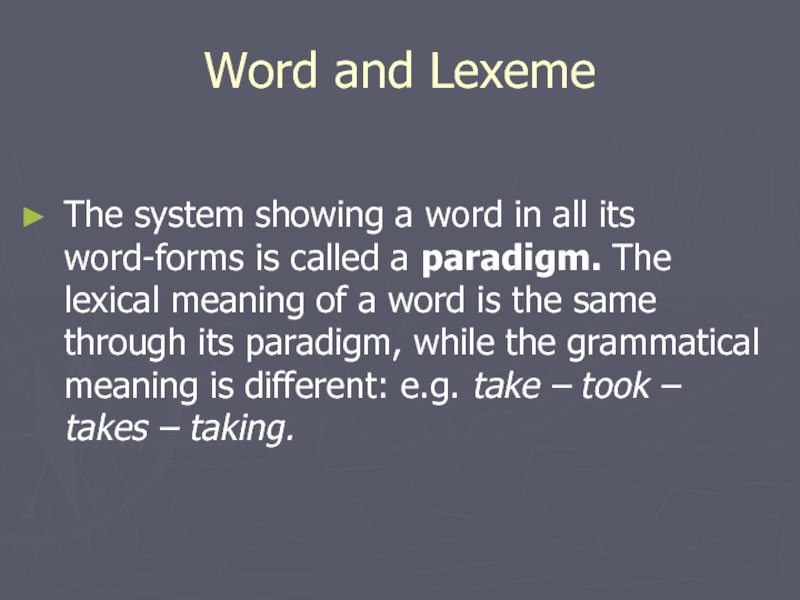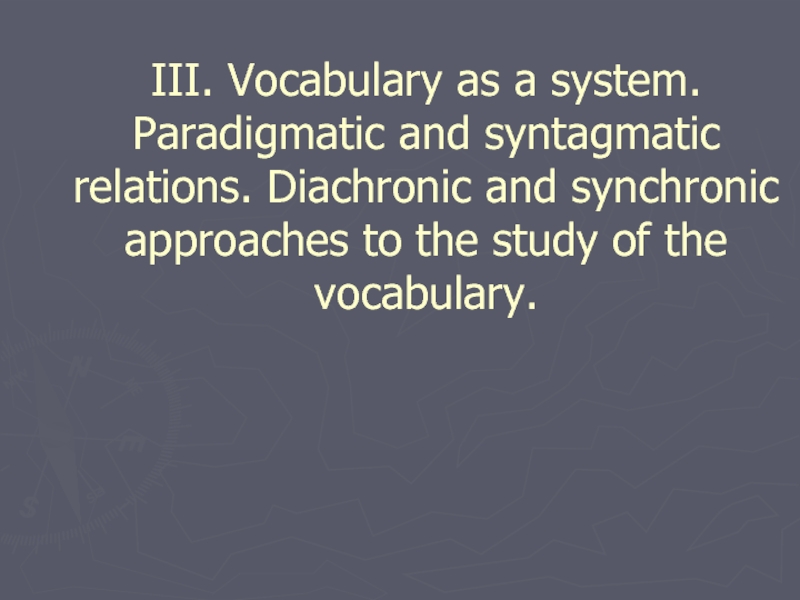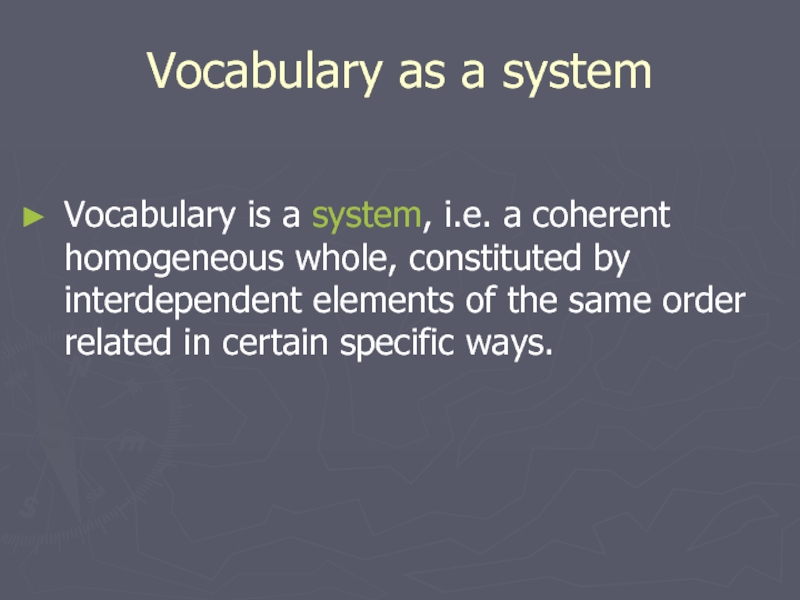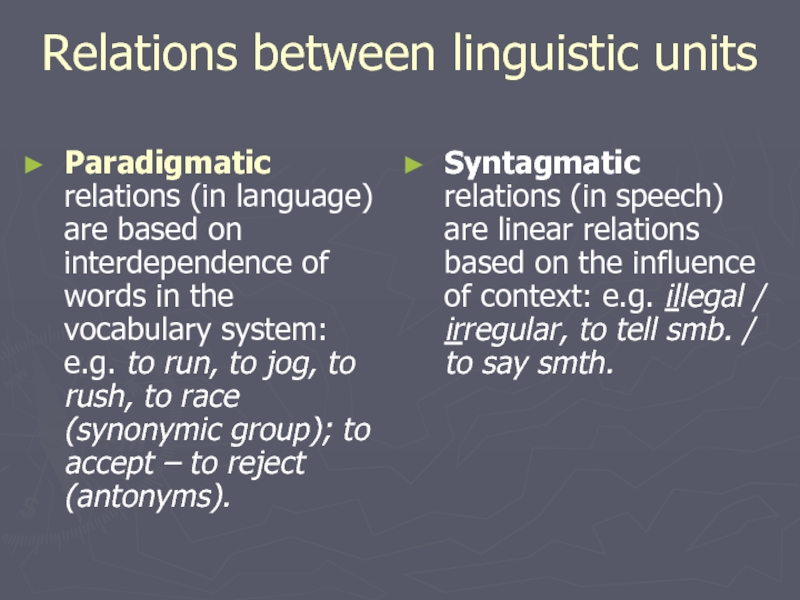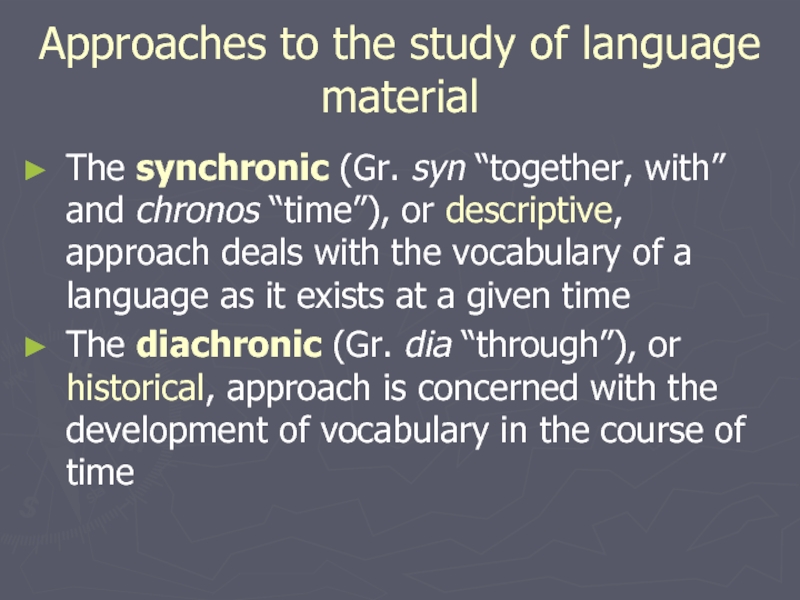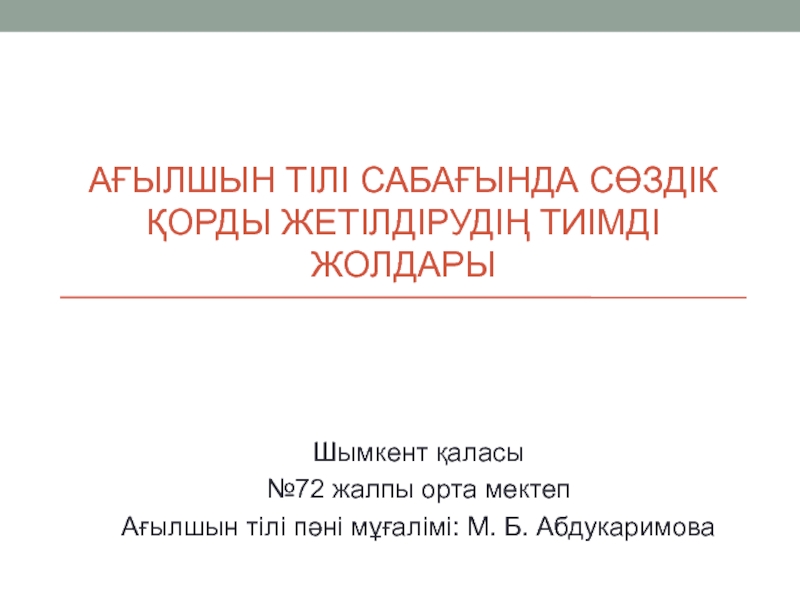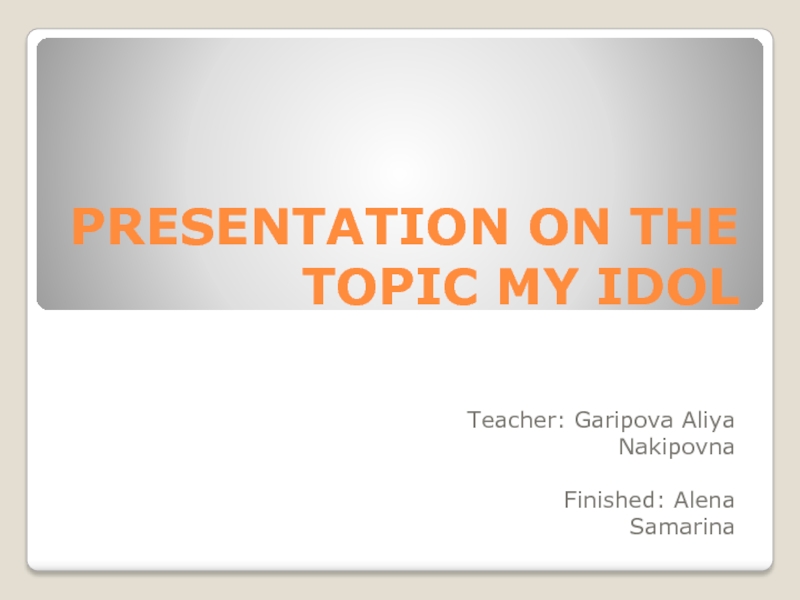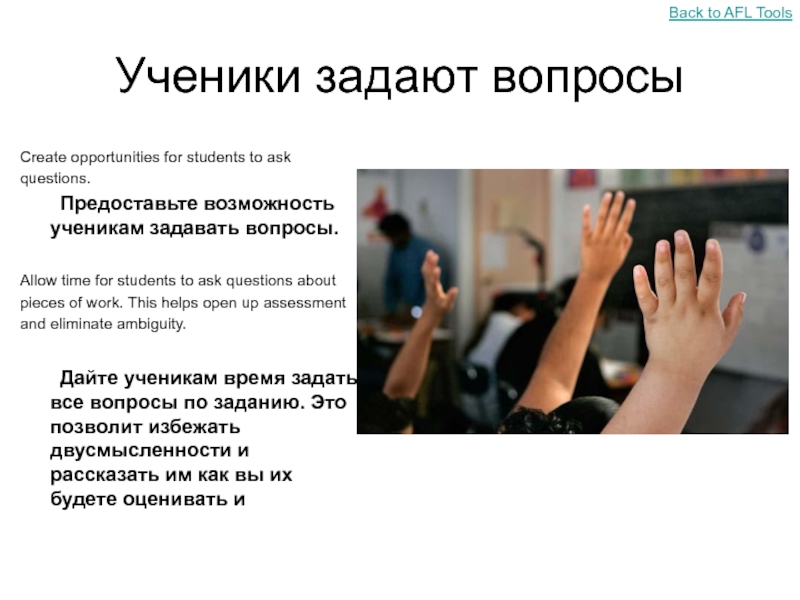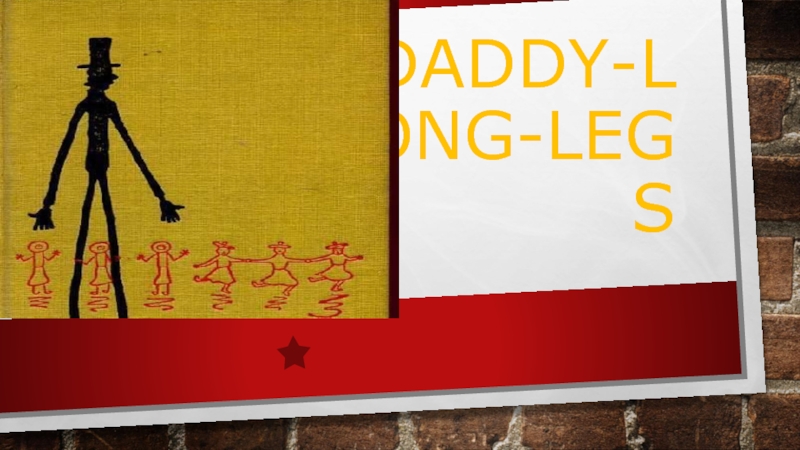- Главная
- Разное
- Дизайн
- Бизнес и предпринимательство
- Аналитика
- Образование
- Развлечения
- Красота и здоровье
- Финансы
- Государство
- Путешествия
- Спорт
- Недвижимость
- Армия
- Графика
- Культурология
- Еда и кулинария
- Лингвистика
- Английский язык
- Астрономия
- Алгебра
- Биология
- География
- Детские презентации
- Информатика
- История
- Литература
- Маркетинг
- Математика
- Медицина
- Менеджмент
- Музыка
- МХК
- Немецкий язык
- ОБЖ
- Обществознание
- Окружающий мир
- Педагогика
- Русский язык
- Технология
- Физика
- Философия
- Химия
- Шаблоны, картинки для презентаций
- Экология
- Экономика
- Юриспруденция
Theoretical Foundations of Lexicology презентация
Содержание
- 1. Theoretical Foundations of Lexicology
- 2. Is English a language of PARADOXES? One
- 3. Plan I. The aim and object of
- 4. I. The aim and object of Lexicology. Its branches, links with other linguistic disciplines.
- 5. The aim and object of Lexicology Lexicology
- 6. Branches of Lexicology General Lexicology is general
- 7. Branches of Lexicology studying different aspects of
- 8. Branches of Lexicology studying different aspects of
- 9. Links of Lexicology with other linguistic disciplines Phonetics Grammar Stylistics
- 10. Connection with Phonetics on the acoustic level
- 11. Connection with Grammar The lexical meaning of
- 12. Connection with Stylistics Differentiation of vocabulary according
- 13. II. Definition of the word. Motivation of words. Functions of words.
- 14. The Word as the Principal Object of
- 15. Asymmetrical dualism of a linguistic sign
- 16. Motivation of words (motivation is the relationship
- 17. Phonetical motivation 1) based on similarity between
- 18. Morphological motivation based on direct connection between
- 19. Semantic motivation Based on co-existence of
- 20. Functions of words (1-3) significative function which
- 21. Functions of words (4-6) deictic function (typical
- 22. Functions of words (7-9) cumulative function which
- 23. Word and Lexeme The invariant of
- 24. Word and Lexeme The word is a
- 25. Word and Lexeme The system showing
- 26. III. Vocabulary as a system. Paradigmatic and
- 27. Vocabulary as a system Vocabulary is
- 28. Relations between linguistic units Paradigmatic relations
- 29. Approaches to the study of language material
Слайд 2Is English a language of PARADOXES?
One in every 7 human beings
More than half of the world’s books
three-quarters of international mail are in English
The largest vocabulary
One of the noblest bodies of literature
There’s no egg in eggplant (баклажан)
There’s neither pine nor apple in pineapple (ананас)
Sweetmeats (конфеты) are candy
Sweetbreads («сладкое мясо», зобная и поджелудочная железы, употребляемые в пищу), which are not sweet, are meat, etc.
Слайд 3Plan
I. The aim and object of Lexicology. Its branches, links with
II. Definition of the word. Motivation of words. Functions of words.
III. Vocabulary as a system. Paradigmatic and syntagmatic relations. Diachronic and synchronic approaches to the study of the vocabulary.
Слайд 5The aim and object of Lexicology
Lexicology (Gr. lexis “word” and logos
Lexical units studied by Lexicology: morphemes, words, word-groups and phraseological units.
Слайд 6Branches of Lexicology
General Lexicology is general study of words and vocabulary,
Special Lexicology is Lexicology of a particular language.
Слайд 7Branches of Lexicology studying different aspects of words (1)
Etymology studies
Semasiology deals with semantic structure of words, development of meanings: e.g. “hand” – about 40 LSV
Word-building studies the process of creating new words, their structural and semantic patterns: e.g. drive (V+ -er)
Слайд 8Branches of Lexicology studying different aspects of words (2)
Phraseology studies word-groups
Borrowing deals with the process of adopting and assimilating words from other languages: e.g. sky, skin – Sc.; government, army – Fr.
Слайд 10Connection with Phonetics
on the acoustic level words consist of phonemes which
cop :: cope (different words), `blackbird (a compound noun) :: `black `bird (a word-group).
Слайд 11Connection with Grammar
The lexical meaning of a word can be conditioned
The lexical meaning of a word may affect its grammatical forms and syntactical functions: e.g.come true, turn red, go wrong;
Grammatical meaning can be expressed by lexical means: e.g. We are going there tomorrow instead of We shall go there.
Слайд 12Connection with Stylistics
Differentiation of vocabulary according to the functional styles of
Слайд 14The Word as the Principal Object of Lexicology
The word is the
Слайд 15Asymmetrical dualism of a linguistic sign
Sound form and meaning of
Слайд 16Motivation of words
(motivation is the relationship between phonemic or morphemic composition
phonetical (e.g. hiss, buzz, cuckoo)
morphological (e.g. thinker, self-propelling, endless)
semantic (e.g. hand of a clock, mouth of a river)
Слайд 17Phonetical motivation
1) based on similarity between the sounds which make up
2) based on association between some sound-clusters and a certain meaning (phonetical symbolism): e.g. [fl] (“quick movement”) – flap, flash, flutter; [sl] (“mud”) – sleet, slush
But: flat, floor, slim (non-motivated)
Слайд 18Morphological motivation
based on direct connection between the morphological structure of the
But: repeat, matter, cranberry (non-motivated)
Слайд 19Semantic motivation
Based on co-existence of direct and figurative meaning: e.g. foot
Слайд 20Functions of words (1-3)
significative function which consists in expressing a general
nominative function (typical of notional words);
representative function (peculiar to proper names);
Слайд 21Functions of words (4-6)
deictic function (typical of demonstrative, possessive, reflexive and
expressive function which consists in rendering emotions or attitude (peculiar to interjections oh, wow, ouch, Why! etc. and other emotionally coloured words, such as kid, dear, honey, puppy, etc.);
interpretative function (characteristic of linguistic units with transferred meaning);
Слайд 22Functions of words (7-9)
cumulative function which consists in enriching semantic structure
pragmatic function which consists in acquiring connotations according to the sphere of communication;
structural function which consists in serving as a basic structural material of a language
Слайд 23Word and Lexeme
The invariant of a word in all its meanings
The child wanted to play with other children (8 words, 7 lexemes)
Слайд 24Word and Lexeme
The word is a unit of speech.
The lexeme
Слайд 25Word and Lexeme
The system showing a word in all its word-forms
Слайд 26III. Vocabulary as a system. Paradigmatic and syntagmatic relations. Diachronic and
Слайд 27Vocabulary as a system
Vocabulary is a system, i.e. a coherent homogeneous
Слайд 28Relations between linguistic units
Paradigmatic relations (in language) are based on
Syntagmatic relations (in speech) are linear relations based on the influence of context: e.g. illegal / irregular, to tell smb. / to say smth.
Слайд 29Approaches to the study of language material
The synchronic (Gr. syn
The diachronic (Gr. dia “through”), or historical, approach is concerned with the development of vocabulary in the course of time
